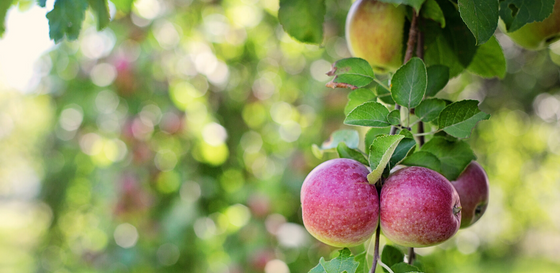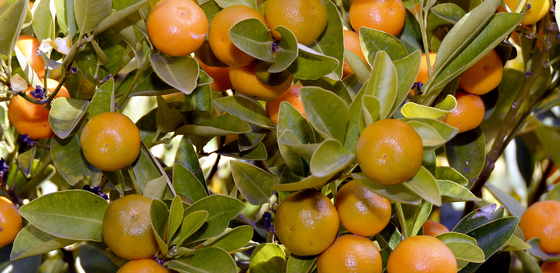
Soils ain't soils. So why do we treat them like dirt?! If your Fruit Salad Tree is not looking as vivacious as it should be, then it may have something to do with the soil conditions that it is getting its growing nutrients from. It is always good practice to take a sample before you fertilise to ensure your tree gains all of the benefits from fertilising.

pH testing means potential of Hydrogen and is a measure if acidity or alkalinity of water soluble substances. A pH scale goes from 1 to 14, where 1 is most acidic and 14 being most alkaline - 7 is neutral.
Knowing your pH levels are important as certain nutrients are absorbed at various pH levels and different plants benefit from different amounts of nutrients.
A pH reading might sound scientific, however it is quick and easy. Purchase a kit from your local nursery or garden supplier. Inside your kit you'll find a bottle of indicator, a slide for the soil, a colour chart, mixing stick and Barium Sulphate powder.
When taking a sample, remove grass and rocks from the topsoil and dig 10-15cm into the soil. Try not to use your hands to collect the sample as this may contaminate your reading.
Place the soil on the clean, dry slide and then place 2-3 drops of Barium Sulphate on the soil. Wait a few minutes and check the colour of your soil against the colour chart.
If your pH is too acidic you could add calcium carbonate (lime) and organic matter. If your pH is too alkaline, then you can add sulphur and organic matter.
Clay soil can hold water, and fruit trees love fresh drained areas. Click here to view a video of Sue demonstrating a few things that you can do to prepare your clay soil to plant a fruitful Fruit Salad tree.
Our Fruit Salad Trees can grow in pots and in the ground. Citrus Fruit Salad Trees are dwarf and grow up to 2 metres. Our Apple and Stone Fruit Salad Trees are 2-3 metres in the ground. They can be espaliered and also grow well in pots.

For further tips on growing different fruit on one Fruit Salad Tree, you can look at planting your tree in a pot, planting your tree in the ground, plus balancing your Fruit Salad Tree. For care tips, find out what causes citrus leaves to turn yellow, and what causes citrus leaves to curl.
Our nursery team write seasonal and timely tree care guides each month, which give you the information you need to care for your Fruit Salad Tree as the seasons change. By signing up, you'll also be the first to know about our specials. Sign up here, and unsubscribe at any time.

Our gift cards are emailed instantly, so that you can give the gift that keeps on giving! Let your loved one choose the fruit to grow on their tree, and we'll deliver to their doorstep, Australia wide.
If you'd like to surprise them with a Fruit Salad Tree, choosing the fruit can be difficult, so here's our guide to choosing the different fruit for your loved one to grow!
You can also shop our wide range of trees now and check out our current specials here!
Comments will be approved before showing up.

How does your edible garden grow? Whether it's a balcony garden, a backyard oasis or an extensive orchard, there are a number of items that will help you grow your delicious, fresh kitchen ingredients. Growing a multi-grafted fruit tree isn't as simple as sticking your tree in some dirt and walking away, but they are pretty easy to grow!

Here are some tips to help you keep your Fruit Salad Tree at it's best throughout the year. We all get busy and sometimes the garden jobs get forgotten. We get it!
We've popped these tips and tricks into categories (eg Citrus or Apple or Stonefruit) and then into seasons (eg in autumn remember to do this or keep an eye out for this in summer, etc.) to make things as easy as possible.
Happy, healthy fruit trees grow more fruit and that will make everyone happy!

There are many ways that you can become more sustainable and growing your own beautiful fruit tree at home is a great way to start!
In this short video, Kerry shows her veggie garden and the different types of Fruit Salad Trees to compliment edible gardens big and small.